Upgrading and Analyzing Apple's Nehalem Mac Pro
by Anand Lal Shimpi on July 13, 2009 5:00 PM EST- Posted in
- Mac
Improvements: Limited but Important
To the disappointment of many, including yours truly, the new Mac Pro doesn’t actually look any different. It’s not that there’s anything wrong with the case, there’s just this expectation of improvement with every major Apple product release. In many ways Apple suffers from the same fate that Intel now does; after Conroe, we expect every major CPU generation to give us at least a 20% performance improvement with no nasty side effects.
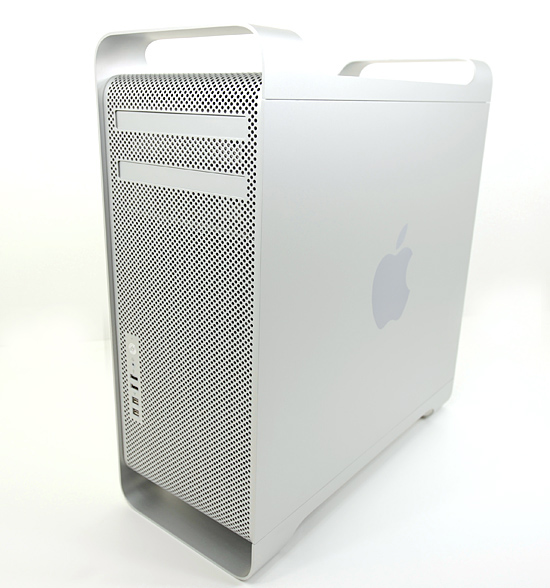
So it doesn’t look any different, but there are some subtle changes to the outside of the case.
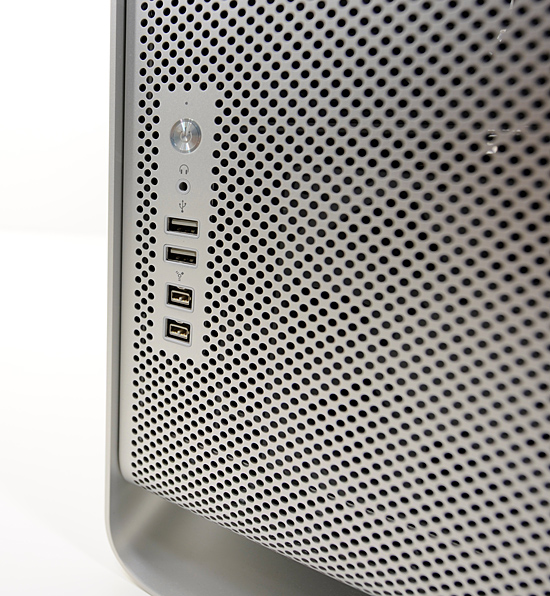
That's FireWire 800 for you
There are no longer any FireWire 400 ports - they are all now FireWire 800. I have two FireWire only devices: a Lexar UDMA Compact Flash card reader and an Apple iSight. The Lexar reader is FireWire 800 (woo!) and the iSight is FireWire 400; I can’t use the iSight on the new Mac Pro (not without a FireWire 400 to 800 adapter as many have pointed out). I’m guessing Apple will probably release an updated 30” display in the not too distant future with an integrated camera. I can’t have it both ways. I can’t have a company who assimilates every standard as quickly as possible yet provides backwards compatibility for every peripheral in my life. It’s the downside to innovation, but I simply can’t dock Apple any points here - it goes against one of the reasons I like Apple.
The inside of the new Mac Pro case is where all of the magic happened.
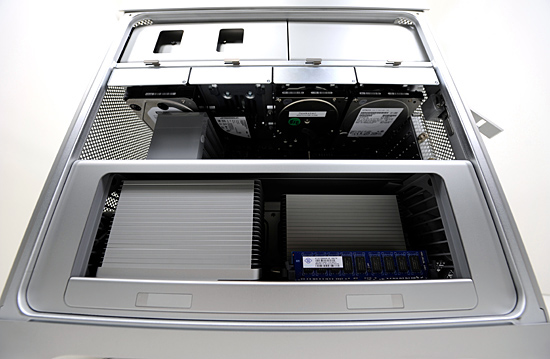
The drive bays in the first Mac Pro were great innovations at first sight; they just slid in and out and you didn’t really need any tools to use them (although a screwdriver was handy). Anyone who owned a Mac Pro knew that wasn’t enough room between the front of the drive sled and the hard drive when installed. There was just enough room for you to slide the tips of your fingers in there, grab and pull the drive out of the machine. The limited finger room plus the initial tendency of the drive sled to stay in place made for some crushed fingers. It was a nice attempt by Apple, but one that was ultimately frustrating to live with. The new Mac Pro adds more room for your fingers to grab the drive sled, avoiding the crushed fingers syndrome of the old model.
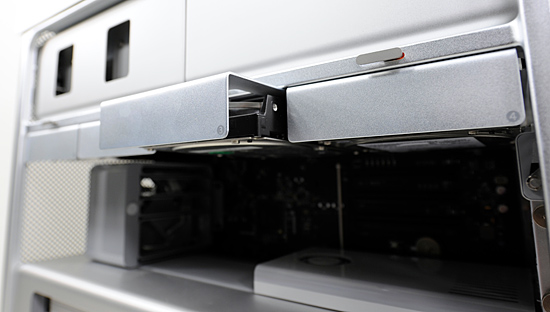
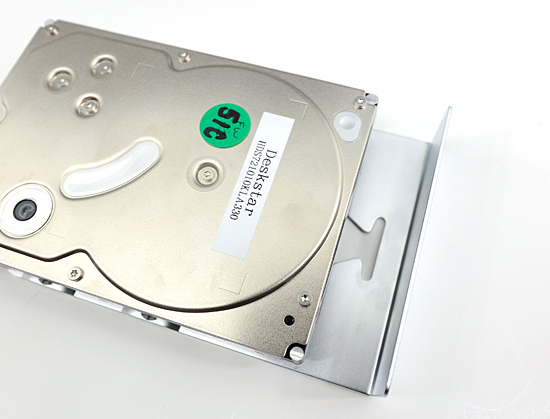
Look ma, more finger room.
The processors are also easier to gain access to; they live on a separate board with the X58 I/O Hub and the DIMM slots. Two latches and a pull are all you need to slide this puppy out:
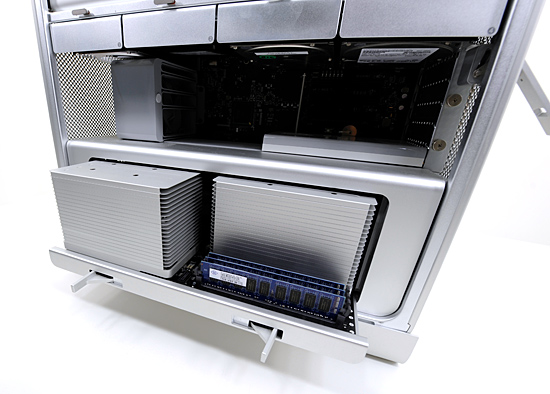
Of course these are the new Nehalem based Xeon processors, meaning the memory controllers are on-die. The DIMM slots on the board branch off directly from each CPU.
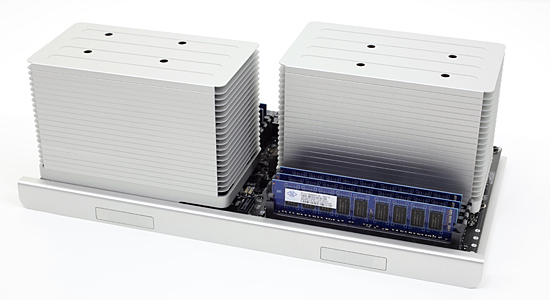
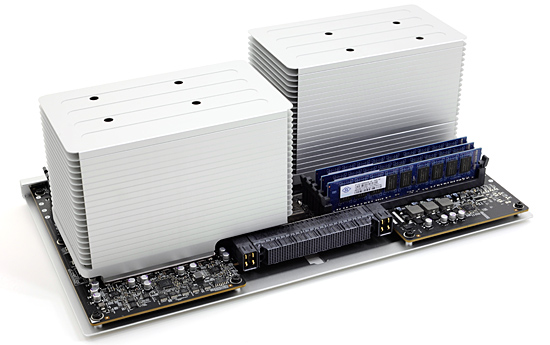
The only danger is bending one of the pins that go into the high density connector you see below
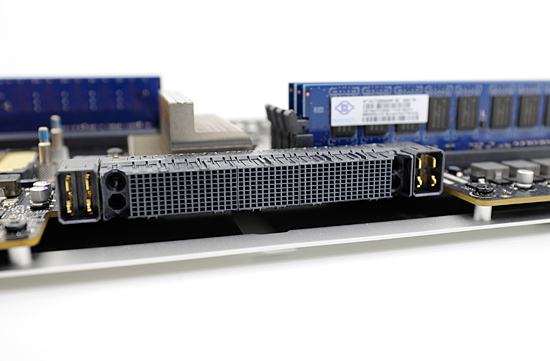
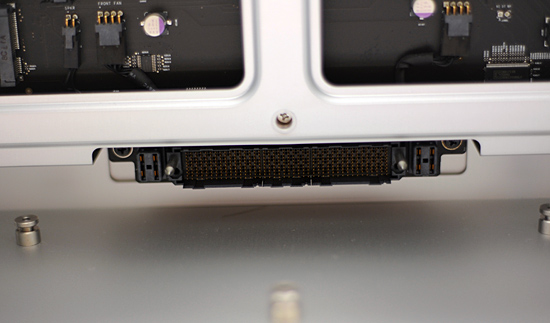
And yes, I’ll show you how to upgrade the CPUs in the new Mac Pro later on in this article.










58 Comments
View All Comments
jamesst - Tuesday, July 14, 2009 - link
"The Lexar reader is FireWire 800 (woo!) and the iSight is FireWire 400; I can’t use the iSight on the new Mac Pro."You can still use your Firewire 400 iSight camera on the Mac Pro's Firewire 800 ports. All you need is a Firewire 400 to Firewire 800 cable. I know that Belkin makes just such a cable and I even purchased one at my local Apple Store here in Raleigh, NC.
joelypolly - Monday, July 13, 2009 - link
I have actually had something similar happen to a socket I was working on. It was a matter of finding a sewing needle and moving each "pin" back to the original position.HilbertSpace - Monday, July 13, 2009 - link
It would be interesting to try swapping the 2-socket tray with a 1-socket Mac Pro, and see if it works(?) Would be cheaper to buy the 2-socket board and upgrade yourself, no?MonkeyPaw - Monday, July 13, 2009 - link
Are FB-DIMMs going to disappear from the market? While at first it doesn't sound Mac-related, original MacPro owners might soon be running out of memory upgrade options (though I doubt they've held out this long to upgrade). It wasn't cheap to start with, but it seems like it was Band-Aid technology. The IMC was the answer, but FB-DIMMs were a stop-gap until Nehalem-Xeons could arrive. Perhaps a memorial article for the technology is needed?JimmiG - Monday, July 13, 2009 - link
Ok so I get it, even the "cheap" Mac Pro uses a Xeon, not an i7... But for all intents and purposes, it's an i7 920.Who in their right mind would pay $2,500 for a i7 920 system with 3GB of RAM, 640GB HDD and a rebranded Geforce 9500 GT? You can build a similar PC (or hackintosh) with the same specifications for the a fraction of the price - in fact you could also bump the RAM to 6GB and throw in a 1TB drive and a 4870 1GB or 4890 if you wanted and still stay *well* below that price point, even if using quality components and case.
The Mac Pro isn't even shiny!
plonk420 - Tuesday, July 14, 2009 - link
did you read page 10?MrDiSante - Thursday, July 16, 2009 - link
Did you read his comment?ltcommanderdata - Monday, July 13, 2009 - link
Another great in depth review. Your experiences with upgrading the processors were particularly interesting although I don't think it'd be something I would try.I just wanted to suggest you Boot Camp the Mac Pro and run the benchmarks needed to add 2x2.26GHz Gainestown and 2x2.93GHz Gainestown results to the Anandtech Bench. It might also be interesting to get a sample of the new nVidia GTX285 Mac Edition. It would certainly address the 1GB of VRAM concerns and would be cheaper than getting the HD4870 if you need 2 dual-link DVI ports since you don't need to buy that finicky adapter. There really aught to be DVI to mini-DP adapters though for people who still want to use the 24" LED display.
http://www.glbenchmark.com/result.jsp">http://www.glbenchmark.com/result.jsp
Oh and for interest, there turns out to be a 3D benchmark comparing the various iPhones to other cell phones. It's called GLBenchmark and needless to say, the iPhone 3G S is a screamer. They are also detecting the iPhone 3G S GPU as a PowerVR SGX 535.
ddobrigk - Monday, July 13, 2009 - link
Actually, the Nehalem-EX's octo-core possibility is a no-go for now. It is a future product and has not been launched yet.Also, a little bit of nitpicking, but it won't use LGA1366 like these Xeons, it'll use LGA1567, because each CPU will sport a 4-channel memory controller.
In addition, it'll sport 4 QPI links, and its intended target are 4-way and 8-way systems, not really 2-way systems. A few rumors exist about some integrators being interested in 2-socket systems, though we're still a few months from actually seeing any LGA1567 motherboard on display, AFAIK. All we saw was an Intel Demo about it.
Don't know if Apple intends to go with 2-socket nehalem-exs, anyway, because when Nehalem-EX really hits the market, there'll also be the 6-core westmeres, I think. In any case, we're way beyond a reasonable number of cores for the typical user. :D
BrianMCan - Friday, July 17, 2009 - link
MacPro's really aren't meant for typical users ;)Scientific, Video/Movies, 3D, and advanced users who may do many things including the already mentioned, or many things at once. Always other things I can be doing while some video is rendering, including playing some Civ 4, or starting the next video project, researching upgrades & repairs for customers, stuff like that.
Although I personally may wait for the 2nd gen Nehalem MacPro's before I upgrade from my first gen MacPro, other than raw processing power, it does most of what I need efficiently enough.